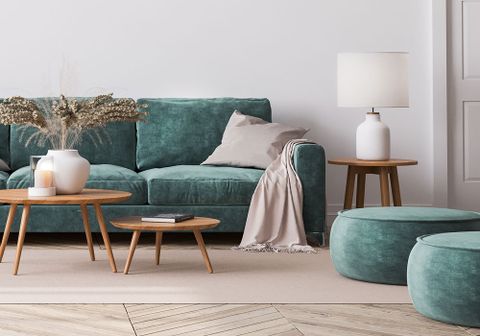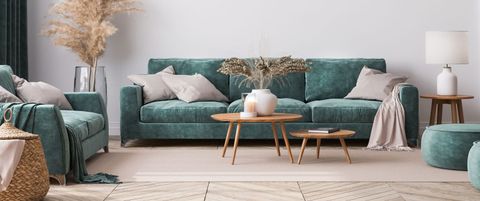We all have that one piece of furniture that just feels like home, right? For many of us, that’s the sofa. It’s where we’ve shared laughter, tears, movie nights, and countless conversations. But what happens when it’s time for a change? Does the thought of parting with your beloved sofa fill you with a touch of sadness? You’re not alone. This isn’t just about getting rid of an old couch; it’s about honoring its history and making a thoughtful decision for its future, and yours.
That worn-in sofa, the one with the perfect dip in the cushions and maybe a few faint stains that tell stories of past celebrations, holds a special place in our hearts. It’s witnessed so much of our lives. But as fashion changes, or wear and tear take their toll, we often face the question: what do we do with it? Simply tossing it out can feel… wrong. It’s like saying goodbye to an old friend. So, what are the options when your sofa is more sentimental than functional, or when you’re ready for an upgrade but don’t want to be wasteful?
Giving Your Sofa a New Life: Creative Reuse Ideas
Before you even contemplate replacement, let’s explore the wonderful world of repurposing. Your sofa, or parts of it, can be transformed in surprisingly delightful ways. Think outside the box!
Upholstery Makeover
Sometimes, the frame and structure of a sofa are still perfectly sound, but the fabric is looking tired or outdated. A professional reupholstery can breathe new life into it. You can choose a completely new fabric – perhaps something bold and modern, or a classic pattern that suits your current decor. It’s like getting a brand-new piece of furniture without the environmental impact of manufacturing and shipping a new one. This is especially a great option for well-made, vintage sofas.
Sectional Salvage
Got a sectional sofa that’s seen better days? Individual pieces might still be perfectly usable. One part could become a cozy reading nook chair, while another might be adapted into a unique bench for your entryway or even a covered patio. Imagine transforming a sofa arm into a stylish pet bed or a small bench for your mudroom. It’s all about seeing the potential in each component.
Creative Deconstruction
Even if the whole sofa can’t be saved, its parts can be. Wooden legs can be repurposed for other furniture projects. The sturdy frame might become the base for a DIY pet sofa or a unique garden bench. The cushions, if still in decent shape, could be used as floor pillows or stuffed into new cushion covers for outdoor seating. You’d be amazed at what a little creativity can achieve.
Responsible Disposal: When Replacement is Necessary
There comes a time when reuse just isn’t feasible, or you’re truly ready for something new. But even then, responsible disposal is key. Tossing a sofa into a landfill isn’t just bad for the planet; it’s a missed opportunity to give materials a second chance.
Donation Station
If your sofa is still in good, usable condition, but you no longer need it, donating it is a fantastic option. Many charities, thrift stores, and shelters are always in need of furniture. This gives someone else a chance to enjoy your sofa, and it keeps it out of the waste stream. Make sure to check with the organization beforehand about their donation policies and whether they can pick up larger items. It’s a win-win situation.
Selling or Gifting
For sofas that are in decent shape, consider selling them online through platforms like Facebook Marketplace, Craigslist, or eBay. You might even be able to recoup some of your costs. If selling isn’t an option, gifting it to a friend or family member who could use it is another wonderful way to ensure it goes to a good home. Sometimes, a simple ‘free to a good home’ post can find it a new owner quickly.
Eco-Conscious Replacement Choices
When it is time to buy a new sofa, you have more sustainable options than ever before. Making informed choices can significantly reduce your environmental footprint.
Sustainable Materials
Look for sofas made from renewable resources like sustainably sourced wood (FSC certified), organic cotton, linen, or recycled materials. Many manufacturers are now prioritizing eco-friendly fabrics and fillings. Research brands that are transparent about their material sourcing and production processes. This is becoming increasingly important.
Durability and Longevity
A truly sustainable choice is a sofa that’s built to last. Invest in quality construction. A well-made sofa, even if it costs a bit more upfront, will endure for years, reducing the need for frequent replacements. Read reviews, check the warranty, and inspect the frame and joinery if possible. Think of it as an investment rather than a disposable item.
Local and Ethical Production
Opting for sofas made locally can reduce transportation emissions and support your local economy. Additionally, choosing brands that practice ethical manufacturing, ensuring fair labor practices and safe working conditions, aligns with a more conscious consumer approach. It feels good to know your purchase supports good practices.
The Role of Professional Refurbishment Services
Sometimes, the sentimental value is so high, or the sofa is such a unique piece, that you want to ensure any reuse or repair is done professionally. This is where specialized services come in.
Upholstery Specialists
Beyond basic reupholstery, some artisans specialize in restoring antique or vintage sofas. They have the expertise to maintain the original character of the piece while updating its comfort and appearance. They can often source period-appropriate fabrics or suggest modern alternatives that honor the sofa’s heritage. It’s an art form, really.
Furniture Repair and Restoration
For structural issues – a wobbly leg, a broken spring, or a damaged frame – professional furniture repair services can work wonders. They can often identify and fix problems that might seem insurmountable, saving a cherished piece from the scrap heap. Their skills can extend the life of your sofa significantly.
Understanding the Environmental Impact of New Furniture
It’s helpful to understand why responsible choices matter. The production of new furniture, especially large items like sofas, has a considerable environmental cost.
Resource Consumption
Manufacturing new furniture requires raw materials like wood, cotton, foam, and metal. Harvesting these materials can lead to deforestation, water usage, and energy consumption. The processes themselves, from milling lumber to creating synthetic fabrics, are often energy-intensive and can produce waste and pollution.
Transportation Footprint
From the factory to the showroom, and finally to your home, new sofas travel long distances. This transportation relies heavily on fossil fuels, contributing to greenhouse gas emissions and air pollution. The more we can reduce the need for new manufacturing and long-haul shipping, the better for the planet.
Landfill Burden
When furniture is discarded, it often ends up in landfills. Sofas are bulky and take up significant space. Many materials used in their construction, like foam and synthetic fabrics, are not easily biodegradable and can persist in the environment for centuries, potentially leaching harmful chemicals.
Making the Decision: Sentimental Value vs. Practicality
Ultimately, the decision to reuse or replace your sofa involves balancing your emotional attachment with practical considerations. Ask yourself these questions:
- How strong is the sentimental attachment? Is it a family heirloom, or just a comfy spot?,
- What is the sofa’s current condition? Is it structurally sound? Is the damage cosmetic or functional?
- What is your budget for a new sofa or for refurbishment? Sometimes, reupholstering can be as expensive as a new mid-range sofa.
- What are your current needs and style preferences? Does the old sofa fit your evolving lifestyle and decor?
- What are your values regarding sustainability? How important is minimizing your environmental impact?
There’s no single right answer. It’s about finding the solution that feels best for you and your home, while also being mindful of the impact. Sometimes, a bit of creative thinking can bridge the gap between sentiment and practicality.
Your sofa is more than just a piece of furniture; it’s a silent witness to your life’s moments. Whether you choose to give it a vibrant new look through reupholstery, repurpose its parts into something entirely new, find it a loving new home through donation or sale, or opt for a sustainably made replacement, the goal is to make a choice that honors its past and respects the future. By thinking creatively and acting responsibly, you can ensure your sofa’s story continues in a way that brings you joy and peace of mind. It’s about mindful consumption and appreciating the things that bring comfort and character to our lives.












